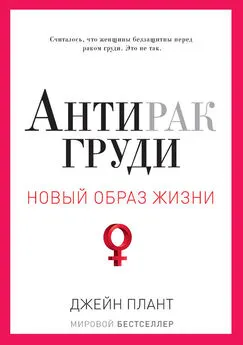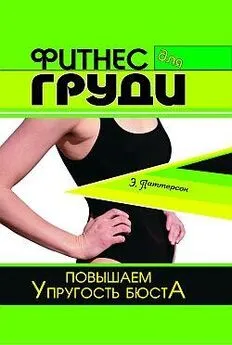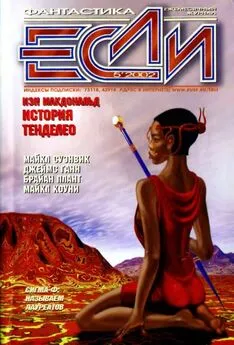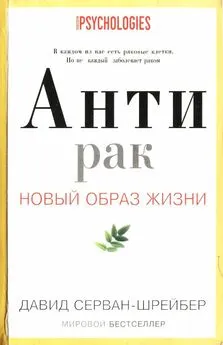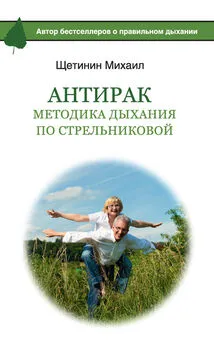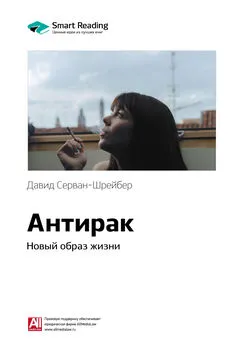Джейн Плант - Антирак груди
- Название:Антирак груди
- Автор:
- Жанр:
- Издательство:Рипол классик
- Год:2015
- Город:Москва
- ISBN:978-5-386-08504-9
- Рейтинг:
- Избранное:Добавить в избранное
-
Отзывы:
-
Ваша оценка:
Джейн Плант - Антирак груди краткое содержание
Рак груди – непонятная и пугающая тема. Суровые факты шокируют: основная причина смерти женщин от 25 до 75 лет – различные формы рака, и рак молочной железы – один из самых смертоносных. Это современное бедствие уже приобрело характер эпидемии. Но книга «Антирак груди» написана не для того, чтобы вы боялись. Напротив, это история о надежде.
Пройдя путь от постановки страшного диагноза к полному выздоровлению, профессор Плант на собственном опыте познала все этапы онкологического лечения, изучила глубинные причины возникновения рака груди и составила программу преодоления и профилактики этого страшного заболевания. Благодаря десяти факторам питания и десяти факторам образа жизни от Джейн Плант ваша жизнь действительно будет в ваших руках.
Книга также издавалась под названием «Ваша жизнь в ваших руках. Как понять, победить и предотвратить рак груди и яичников».
Антирак груди - читать онлайн бесплатно ознакомительный отрывок
Интервал:
Закладка:
425
Berseth, C.I. and others, 1990. Postpartum changes in pattern of gastrointestinal regulatory peptides in human milk. Am. J. Clin. Nutr., 51 (6), 985–990.
426
Burns, D.M. and others, 1999. Breast cancer cell-associated endopeptidase EC24.11 modulates proliferative response to bombesin, British Journal of Cancer , 79 (2), 214–220; Bold, R.J, and others, 1998. Bombesin stimulates in vitro growth of human breast cancer independent of estrogen receptor status. Anticancer Research , 18 (16A), 4051–4056; Miyazaki, M. and others, 1998. Inhibition of growth of MDA-MB-231 human breast cancer xenografts in nude mice by bombesin/gastrin-releasing peptide (GRP) antagonists RC-3940-11 and RC-3095. European Journal of Cancer , 34 (5), 710–717; Nelson, J, and others, 1991. Bombesin stimulates proliferation of human breast cancer cells in culture. Br. J. Cancer , 63 (6), 933–936; Giacchetti, S. and others, 1990. Characterization, in some human breast cancer cell lines, of gastrin-releasing peptide-like receptors which are absent in normal breast epithelial cells. Int J. Cancer , 46 (2), 293–298; Weber, C.J. and others, 1989. Gastrin-releasing peptide, calcitonin gene-related peptide, and calcitonin-like immuno-reactivity in human breast cystfluid and gastrin-releasing peptide-like immunoreactivity in human breast carcinoma cell lines. Surgery , (6), 1134–1139 (disc. 1139–1140).
427
Markwalder, R. and others, 1999. Gastrin-releasing peptide receptors in the human prostate: relation to neoplastic transformation. Cancer Research , 59 (5), 1152–1159; Festuccia, C. and others, 1998. In vitro regulation of pericellular proteolysis in prostatic tumor cells treated with bombesin. Int. J. Cancer , 75 (3); 418–431: Krongrad, A. and others, 1997. Endopeptidase 24.11 activity in the human prostate cancer cell lines LNCaP and PPC-1. Urological Research, 25 (2), 113–116; Jungwirth, A. and others, 1997. LHRH antagonist Cetrolix (SB-75) and bombesin-antagonist RC-3940-II inhibit the growth of androgen-independent PC-3 prostate cancer in nude mice. Prostate , 32 (3), 164–172; Larran, J. and others, 1996. In vitro characterization of bombesin and calcitonin on the proliferation of PC3, DK145 and LNCaP cancer prostatic cell lines. International Journal of Developmental Biology, 1996 (Suppl. 1), 275S–276S; Aprickian, A.G. and others, 1996. Bombesin specifically induces intracellular calcium mobilization via gastrin-releasing peptide receptors in human prostatic cancer cells. Journal of Molecular Endocrinology , 16 (3), 297–306; Bologna, M. and others, 1989. Bombesin stimulates growth of human prostatic cancer cells in vitro. Cancer , 63 (9), 1714–1720; Wasilenko, W.J. and others, 1996. Effects of the calcium influx inhibitor carboxyamido-triazole on the proliferation and invasiveness of human prostate tumor cell lines. Int J. Cancer , 68 (2), 259–264.
428
Takeyama, M. and others, 1989. Enzyme immunoassae of gastrin-releasing, peptide (GRP)-like immunoreactivity in milk. Int. J. Pept. Protein Res. , 34 (1), 70–74.
429
Ducroc, R. and others, 1995. Immunoreactive substance P and calcitonin-gene-related peptide (CGRP) in rat milk and in human milk and infant formula's. Am. J. Clin. Nutr., 62 (3), 554–558.
430
Lembeck, F. and others, 1979. Substance P as neurogenic mediator of antidromic vasodilation and neurogenic plasma extravasation. Arch. Pharmacol. , 310 (2), 175–183.
431
Khare, V. K. and others, 1998. The neuropeptide/mast cell secretagogue substance F is expressed in cutaneous melanocyticlesions. Journal of Cutaneous Pathology , 25 (1), 2-10.
432
Ducroc, R. and others, 1995. Immunoreactive substance P and calcitonin-gene-related peptide (CGRP) in rat milk and in human milk and infant formula's. Am. J. Clin. Nutr. , 62 (3), 554–558.
433
Faulkner, A., 1998. Insulin-like growth factor 1 concentrations in milk and plasma after growth hormone treatment. Biochemical Society Transactions , 26 (4), 386; Silanikove, N. and others, 1998. Metabolic and productive response of dairy cows to increased ion supplementation at early lactation in warm weather. Journal of Dairy Research , 65 (4), 529–543; Ginjala, V. and others, 1998. Determination of transforming growth factor-beta 1 (TGF-beta 1) and insulin-like growth factor-1 (IGF-1) in bovine colostreum samples. Journal of Immunoassay , 19 (2–3), 195–207; Schober, D.A. and others, 1990. Perinatal expression of type 1 IGF receptors in porcine small intestine. Endocrinology , 126 (2), 1125–1132.
434
Rao, R.K. and others, 1998. Luminal stability of insulin-like growth factor-1 and -2 in developing rat gastrointestinal tract. Journal of Pediatric Gastroenterology and Nutrition , 26 (2), 179–185.
435
Parisot, J.P. and others, 1999. Altered expression of the insulinlike growth factor-1 receptor in a tamoxifen-resistant human breast cancer cell line. Br. J. Cancer , 79 (5–6), 693–700; Sciacca, L. and others, 1999. Insulin receptor activation by insulin-like growth factor– 2 in breast cancers: evidence for a new autocrine/paracrine mechanism. Oncogene , 18 (15), 2471–2479; Grothey, A. and others, 1999. The role of insuline-like growth factor and its receptor in cell growth transformation, apoptosis, and chemoresistance In solid tumors. Journal of Cancer Research and Clinical Oncology , 125 (3–4), 166–173; Perks, C. M. and others, 1999. Activation of integrin and ceramide signalling pathways can inhibit the mitogenic effect of insulin-like growth factor-1 (IGF-1) in human breast cancer cell lines. Br. J. Cancer , 79 (5–6), 701–706; de Cupis, A. and others, 1998. Responsiveness to hormone, growth factor and drug treatment of a human breast cancer cell line; comparison between early and late cultures. In Vitro Cellular and Developmental Biology – Animal , 34 (10), 836–843; Kobari, M. and others, 1998. The inhibitory effect of an epidermal growth factor receptor specific tyrokinase inhibitor on pancreatic cancer cell lines was more potent than inhibitory antibodies against the receptors for EGF and IGF-1. International Journal of Pancreatology , 24 (2), 85–95; Gooch, J.L. and others, 1998. Interleukin 4 inhibits growth and induces apoptosis in human breast cancer cells. Cancer Res. , 58 (18), 4199–4205; Choki, I. and others, 1998. Osteobiast-derived growth factors enhance adriamycin-cytostasis of MCF-7 human breast cancer cells. Anticancer Res. , 18 (16A), 4213–4224; Jackson, J.G. and others, 1998, Insulin receptor substrate-1 is the predominant signalling molecule activated by insulin-like growth factor-1, insulin, and interleukin– 4 in estrogen receptor-positive human breast cancer cells. Journal of Biological Chemistry , 273 (16), 9994-10 003; Westley, B.R. and others, 1998. Interactions between the oestrogen and IGF signalling pathways in the control of breast epithelial cell proliferation. Biochemical Society Symposium , 63, 35–44; Surmacz, E. and others, 1995. Overexpression of insulin receptor substrate 1 (IRS-1) in the human breast cancer cell line MCF-7 induces loss of estrogen requirements for growth and transformation. Clinical Cancer Research , 1 (11), 1429–1436.
436
Untersasser, G. and others, 1999. Proliferative disorders of the aging human prostate: involvement of protein hormones and their receptors. Experimental Gerontology , 34 (2), 275–287; Xu, Z.D., 1999. Hammerhead ribozyme-mediated cleavage of the human insulin-like growth factor-2 ribonucleic acid in vitro and in prostate cancer cells. Endocrinology , 140 (5), 2134–2144; Marelli, M.M. and others, 1999. Luteinizing hormone-releasing hormone agonists interfere with the antagonic activity of the insulin-like growth factor system in androgen-dependent prostate cancer cells. Endocrinology , 140 (1), 329–334; Larnharzi, N. and others, 1998. Growth hormone-releasing hormone antagonist MZ-5-156 inhibits growth of DY-145 human androgen-independent prostate carcinoma in nude mice and suppresses the levels and mRNA expression of insulin-like growth factor– 2 in tumors. Proc. Natl. Acad. Sci. USA , 95 (15), 8864–8868; Wang, Y.Z. and others, 1998. Sex hormone-induced prostatic carcinogenesis in the noble rat; the role of insulin-like growth factor-1 (IGF-1) and vascular endothelial growth factor (VEGF) in the development of cancer. Prostate , 35 (3), 165–177.
437
He, Y., 1999. Comment on the Association between InsulinLike Growth Factor-1 (IGF-I) and Bone Mineral Density: Further Evidence Linking IGF-I to Breast Cancer Risk. Journal of Cellular Endocrinology and Metabolism , 84, 1760.
438
Perks, C. M. and Holly, J.M.P., 2000, Insulin-Like Growth Factor Binding Proteins (IGFBPs) in Breast Cancer. Journal of Mammary Gland Biology and Neoplasia , 5, 75–84.
439
Murphy, M.S. and others, 1998. Growth factors and the gastrointestinal tract. Nutrition , 14 (10), 771–774; Buts, J.F., 1998, Bioactive factors in milk. (in French.) Archives de Pediatrie , 5 (3), 298–306.
440
Shen, W.H. and others, 1998. Stability and distribution of orally administered epidermal growth factor in neonatal pigs. Life Sciences , 63 (10), 809–820; Rao, R.K. and others, 1998. Bovine milk inhibits proteolytic degradation of epidermal growth factor in human gastric and duodenal lumen. Peptides , 19 (3), 495–504; McCuskey, R.S. and others, 1997. Effect of milkborne epidermal growth factor on the hepatic microcirculation and Kupfer cell function in suckling rats. Biology of the Neonate , 7 (3), 202–206; Oguchi, S. and others, 1997. Growth factors in breast milk and their effect on gastrointestinal development. Chang Hua Min Kuo Hsiao Ehr Ko I Hsuek Tsa Chih , 38 (5), 332–337.
441
Salomon, D.S. and others, 1999. Cripto: a novel epidermal growth factor (EGF)-related peptide in mammary gland development and neoplasia. Bioessays , 21 (1), 61–70; Chou, Y.C. and others, 1999. Induction of mammary carcinomas by N-methyl-N-nitrosurea in ovariectomized rats treated with epidermal growth factor. Carcinogenesis , 20 (4), 677–684; Kurtz, A. and others, 1998. Local control of mammary gland differentiation: mammary-derived growth inhibitor and pleiotrophin. Biochemical Society Symposium , 63, 51–69; Taylor, M.R. and others, 1997. Lactadherin (formerly BA46); a membrane-associated gycoprotein expressed in human milk and breast carcinomas, promotes Arg-Gly-Asp (RGD)-dependent cell adhesion. DNA and Cell Biology , 16 (7), 861–869.
442
Zhau, H.J. and others, 1996. Androgen-depressed phenotype in human prostate cancer. Proc. Natl. Acad. Sci. U.S.A ., 93 (26), 15 152-15 157.
443
Thornburg, W. and others, 1984. Gastrointestinal absorption of epidermal growth factor in suckling rats. American Journal of Physiology , 246, G80-G85.
444
www.prostatepointers.org/cmyers/pf0696.html
Читать дальшеИнтервал:
Закладка:
